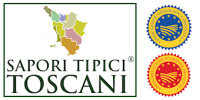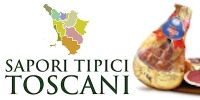The Val d’Elsa - Monteriggioni and Colle di Val d’Elsa
The Val d’Elsa lies between the provinces of Florence and Siena. Divided by the river Elsa, this area of Tuscany is one of the region’s most beautiful sections of countryside, rich in vineyards and olive groves that produce wine and oil renowned throughout the world.
As well as boasting a vast historical and artistic heritage made up of chapels, churches, ancient monuments and magnificent 15th and 16th century villas such as Collazzi and Tattoli, the Val d’Elsa also abounds in excellent restaurants and fine regional cuisine. Tourists searching for places to stay in this area will find that agriturismi, otherwise known as farmhouse residences, are the commonest form of lodging. Many are in converted farmhouses or villas that have been restored to the highest standards, offering a taste of life that has been forgotten elsewhere, but there are a number of elegant modern hotels also available. Ever since the Middle Ages, this region has been known for its glass manufacturers and saffron farmers, two trades that attracted young apprentices from all over Europe.
Half way between San Gimignano and Pienza, on a hill that overlooks the Via Cassia-Francigena, is Monteriggioni, a magnificent fortified town that has retained its circle of walls almost completely intact. Originally built by the Senese in 1213-1219, the walls of Monteriggioni run for 570 metres around the town and are 2 metres thick, with a total of 14, 15-metre tall towers at regular intervals. A 15th tower stands within the fortifications, which are broken by just two gateways, Porta Franca towards Siena and Porta San Giovanni towards Florence. The moat that originally surrounded the town had an original form of defence known as carbonaie, meaning that the bottom was filled with coal so that it could be lit to provide a ring of fire round the city in the event of a siege.
The interior of Monteriggioni is made up of a large square, Piazza Roma, onto which faces the Church of Santa Maria Assunta, built around a single vaulted nave that terminates in a square apse. The coloured facade has a doorway surmounted by an archivolt. The bell tower was added in the 18th century.
Although it only totals 42 inhabitants, is a favourite destination of tourists from all over the world. Because there is only one hotel, those who intend to sleep here overnight are advised to book well in advance.
Colle Val d’Elsa is a town on three levels: Borgo, which is accessible through the majestic Porta Nuova and is made up of beautiful 16th and 17th century patrician town houses; Castello, or Colle Alta, which still retains its original Medieval appearance and is the town’s religious and political centre; and Piano, or Colle Bassa, which is composed of the ancient hamlet of Spugna, where the town’s wool weavers, paper manufacturers and glass craftsmen made use of the nearby river Elsa. In 1592 Colle Val d’Elsa was made a bishopric.
Along the main street of the Colle section of town, Via di Castello, stands the tower that was once the home of the great architect Arnolfo di Cambio, born in Colle Val d’Elsa. Other important buildings that line this street are the 14th century Palazzo dei Priori – which today houses the Museo di Arte Sacra and the Museo Civico –, and the Baroque Duomo, with a Crucifix attributed to Giambologna above the high altar. In Piazza Duomo stands the 14th century Palazzo Pretorio, which contains the Museo Archeologico. Outside Porta Nuova it is well worth stopping for a look at the Sanctuary of Santa Maria delle Grazie, which contains Senese School frescoes from the 15th century.
Still a major industrial centre, Colle is known for its fine quality, hand crafted crystal ware.
The Piticciano area of town, better known as Castello, is the earliest fortified nucleus of Colle Val d’Elsa. Access is through two former gateways that have since been demolished. Within there are three main streets, two large squares, two churches, as well as towers, town houses, wells, courtyards and gardens. Only a few Medieval constructions still survive in this area, such as part of the Palazzo Pretorio and the tower of the great architect and sculptor Arnolfo di Cambio.
• Siena in the Renaissance
• Siena in the Middle Ages
• Siena in Antiquity
• Town Map Siena
• Farm Holidays and Country Houses
• Residence, Apartments
• Bed & Breakfasts
• Historical Residences
• Last Minute Siena
• Restaurants
• Pubs & Wine Bar
• University for Foreigners
• Palazzo Chigi-Saracini
• Palazzo d’Elci degli Alessi
• Loggia della Mercanzia
• Palazzo Sansedoni
• Palazzo Chigi-Zondadari
• Fonte Gaia fountain
• Carthusian Monastery of Pontignano
• Forte di Santa Barbara
• The Duomo – The Cathedral of the Assunta
• Church of the Osservanza
• The Oratory of San Bernardino
• Church of San Francesco
• Short Biography of St Catherine of Siena
• St Catherine Sanctuary
• Church of S. Niccolò al Carmine
• Bologna-Buonsignori museum
• Accademia dei Fisiocritici
• I Musei Senesi
• The Palazzo Pubblico and the Torre del Mangia
• Piazza del Campo
• The Montagnola Senese and the Fortified Village of Sovicille
• The Castles of Belcaro and Quattro Torri
• The July and August Palio
• The Contrade
• The Days of the Palio
• The Drappellone
• The Eve of the Palio
• The Corteo Storico Procession
• The Race
• The Patron Saint and Oratory of Each Contrada
• Weekly Appointments in each Contrada from April onwards
• Croce del Travaglio Place
• From Piazza del Campo to the Duomo Along Via di Città
• The Curves of Piazza del Campo
• Costarella dei Barbieri street
• Borgo d’Ovile
• The Terzo of Camollia – main streets
• Casato di Sopra e Casato di Sotto
• Terzo di San Martino district
• The Terzo di Città District - Via Stalloreggi, Via San Quirico
• The Terzo di Città District – The Pinacoteca Nazionale
• Golf courses in Siena and Tuscany
• Wedding in Tuscany - Siena area
• San Casciano dei Bagni
• Chianciano Terme
• Bagni San Filippo
• Bagno Vignoni
• Rapolano Terme - Baths of San Giovanni and Baths of the Antica Querciolaia
• The Countryside around Siena and its Thermal Water Springs
• SkiPass Monte Amiata
• WebCam sul Monte Amiata
• Meteo Monte Amiata
• The Val d’Orcia and Its Main Towns
• Pienza - the old town centre
• Montepulciano - the old town centre
• San Quirico d’Orcia - the old town centre
• Montalcino and the Land of Brunello
• The Abbey of Monte Oliveto Maggiore and the Crete
• The Crete Senesi
• Castellina in Chianti and the Via Chiantigiana Towards Siena
• Siena and Southern Chianti - from the Castle of Montalto to the Castle of Brolio and on to the Castle of Meleto
• The Chianti Hills - Monte Calvo, Monte Luco and Monte San Michele
• Cortona and the Valdichiana
• San Gimignano - The old town centre and its major sights
• The Val d’Elsa - Monteriggioni and Colle di Val d’Elsa
• Along the Old Via Francigena
• Oleum Evo online selling
• Sapori Tipici Italiani buy online now
• il Prosciutto Cotto









